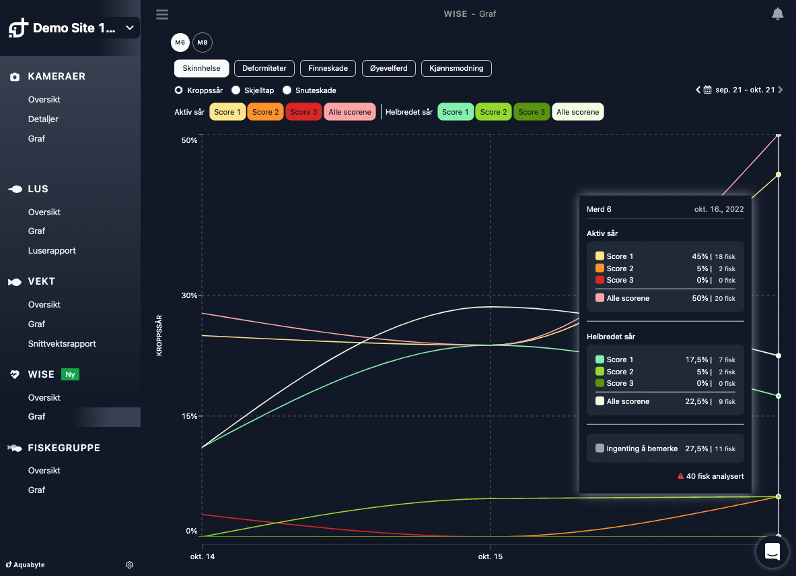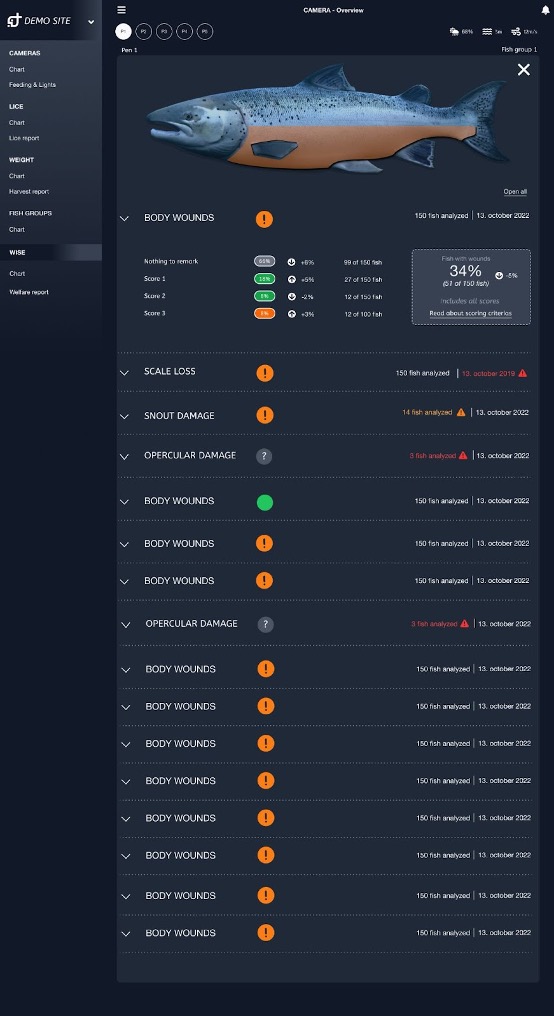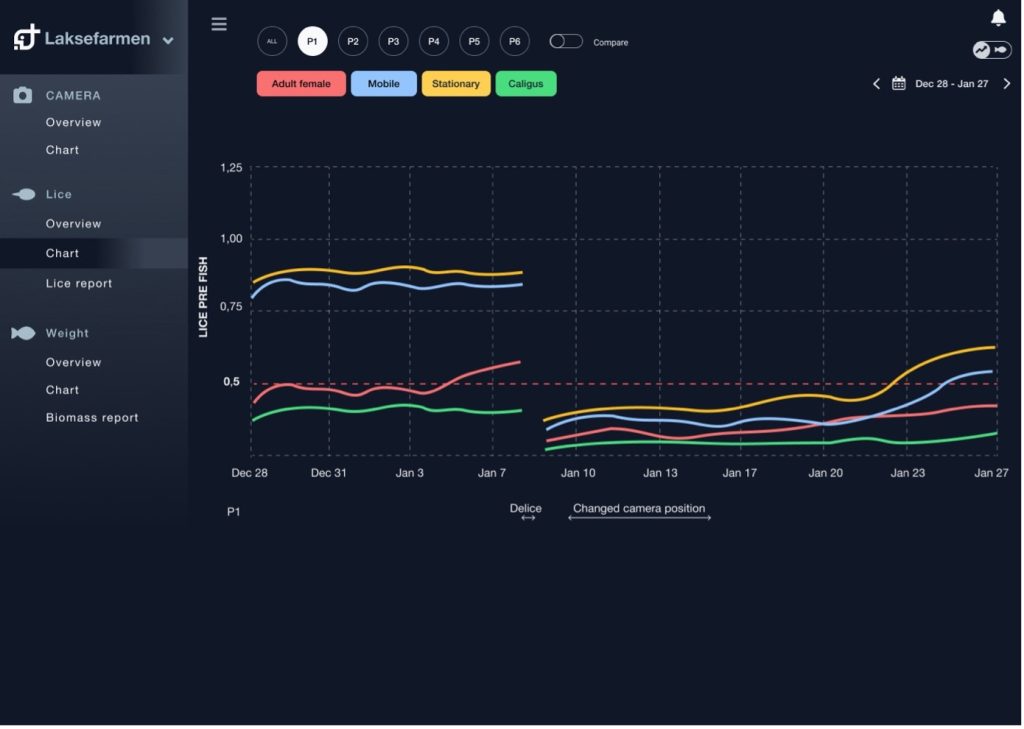Aquabyte WISE
Welfare Indicator ScorE – Data-based decisions for increased revenue
WISE monitors and identifies all observable welfare indicators. The tool also provides continuous monitoring of the welfare status in the cage. You get real-time knowledge for all the welfare indicators you need. Skin, eye, deformities, fins and maturation. When you need it.
You can choose indicators that are adapted to your needs. All year.
By having ongoing control of the welfare status, both the risk of reduced welfare and the risk of downgrading, due to poor welfare, are reduced. You also get information to be able to make data-based decisions on all central welfare indicators so that efficiency and income are increased.
Value for you:
- Daily insight into welfare status in the pen to maintain high overall fish welfare
- Reduced mortality risk
- Reduced downgrading risk
- Increased revenue
We have developed this solution in collaboration with the Institute of Marine Research. This has resulted in a method based on the Fishwell standard, where we have enabled “manual” scoring of fish through images. Through this collaboration, we have developed a scoring guide for image-based documentation of welfare.

WISE is based on the LaksVel standard, and we have collaborated with the Norwegian Institute of Marine Research in the development of this product. This has resulted in a method that is in accordance with the LaksVel standard, where we transfer “manual” scoring of fish to image-based scoring. Based on this collaboration, we have developed a scoring guide for image-based documentation of welfare.

Automatic LICE COUNTING
Aquabyte LICE monitors and counts lice levels without physically handling fish. Aquabyte LICE replaces the need for manual counting of salmon lice on site, and it can be used for weekly reporting to the Norwegian Food Safety Authority (Mattilsynet), following trends over time and detect changes in lice levels early. This provides a better basis for making good decisions and implementing targeted measures to combat salmon lice.
Value for you:
- Accurate daily counting of sea lice across different life stages
- Continuous surveillance of lice loads delivers key information for early decision making
- Daily sea lice development gives insight into key trends
- Reliable measurement of the effect of sea lice treatments and other sea lice initiatives
- Reduced handling and fish stress



